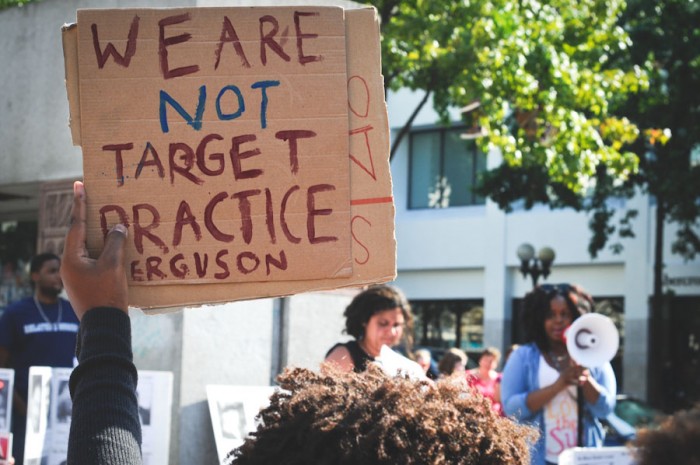
Back in June, Seattle resident Oscar Perez Giron committed the most minor of crimes, and ended up dead.
When fare enforcement officers approached 23-year-old Giron and his two companions on the light rail and asked for proof of fare payment, they could only produce two valid ticket stubs.
The officers ordered them off the train at the next stop, and detained them on the platform, calling for backup from the King County Sheriff. Giron tried to run. A scuffle ensued. He grabbed a gun from his backpack.
A King County Sheriff’s deputy shot Giron, fatally wounding him.
This sort of incident is becoming more and more common in Seattle, as it is around the country.
But our city has comparatively little crime, and an enviably minuscule number of homicides each year.
Last year we topped out at 29 homicides. The killer in six of those incidents was a law enforcement officer.
How did we get here, to a point where more than 20 percent of murders are at the hands of the very police who are supposed to protect us?
The ongoing confrontation in Ferguson, Missouri has a lot of people pointing fingers at the ‘militarization’ of local police forces.
Has over-reliance on heavy equipment, coupled with a military mentality that frames citizens as threats, rather than allies, turned our local cops into killers?
“A lot has to do with training. We are taught skills to survive,” said Retired Lieutenant Commander and Law Enforcement Against Prohibition (LEAP) member Diane Goldstein. “There is a lot of controversy within law enforcement about the shift from community policing to a more military model.”
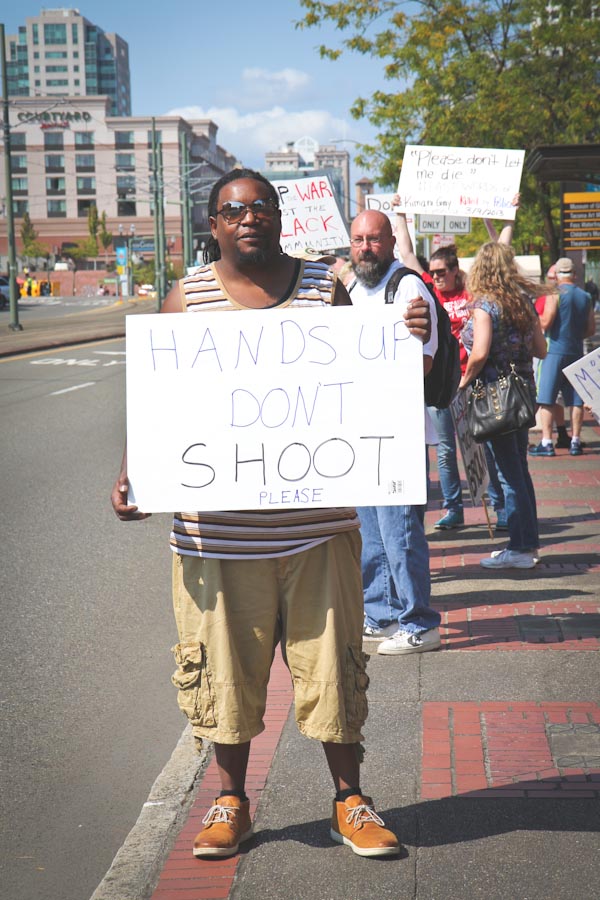
Of course the Andy Griffith, community police officer ideal never really existed (especially not for people of color). But in cities like Seattle, Goldstein says there was a big shift in the 1980s and 90s that began as a side effect of the drug war.
Nestled along the Canadian border, and speckled with international ports, Western Washington was identified early on as a High Intensity Drug Trafficking Area (HIDTA), and has thus been a long time beneficiary of federal programs aimed at culling drug trafficking.
It’s also home to Joint Base Lewis-McChord, leading to a substantial ex-military population, many of whom transition into law enforcement.
“Many police are former military and some even go from military jobs directly to local municipal police positions,” explained local activist and cop watcher Drew Hendricks. “The difference is usually articulated in use of force roles; soldiers shoot to kill, police shoot to eliminate the threat.”
And these days police see more and more things as threats. Case in point: the shooting of Michael Brown by the Ferguson police, the escalation of Giron’s fare jumping into a homicide, the homeless man shot to death by Seattle police in Gas Works Park last month. The list goes on.
After the police in Ferguson responded to anger over Brown’s death by sending out a police force that looked for all intents and purposes like soldiers, outrage increased.
People wanted to know where the Ferguson and St Louis Police Departments got their weapons and why they needed them.
The answer: the 1033 program, administered by the US Defense Logistics Agency (DLA) and designed to repurpose surplus military gear like grenade launchers and armored vehicles by transferring them to local police departments.
Goldstein explains that the program started with the National Defense Authorization Act (NDAA) in 1990, giving preference to local police located in High Intensity Drug Trafficking Areas (HIDTA) like the Northwest.
The availability of these freebies exploded as the U.S. military returned from the wars in Iraq and Afghanistan wars, bringing lots of surplus equipment with them.
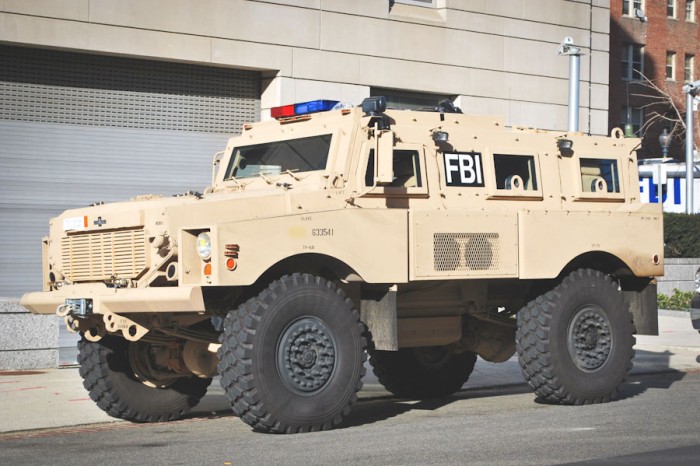
Why would local police departments want or need used tanks and Mine-Resistant Ambush Protected Vehicles (MRAPs)?
“Because the federal government gives them away for free,” said Goldstein with a wry chuckle. “Half a billion dollars worth just last year.”
Getting free military gear is as simple as ordering something from a catalogue: fill out a form, pay shipping and a department can have their very own humvee.
Sounds like quite a deal, but there are a couple of catches:
“Many departments lack the economic capacity to train employees to use the free guns they have received,” explains Goldstein — and the feds don’t provide that training when they ship the equipment.
Which makes the so-called “use it or lose it” clause in the 1033 program that much more terrifying. Local police departments have to use every item received within one year of the request date, or they’re required to return it — providing a perverse incentive to roll out heavy weaponry they’re not properly trained to operate when it’s not actually necessary.
News from Ferguson has left a lot of Seattleites wondering what kind of military-grade weaponry the SPD has in it’s armory.
Last week, the department released a list of items obtained through the 1033 program between May 2010 and March 2014. Ballistic goggles. Binoculars. Reflex sights for rifles. Those items may sound less than lethal to some, but in a civilian context, war weapons like these are a recipe for disaster.
“The military scopes for 130 officer’s rifles are troubling,” noted Hendricks. “No one needs a reflex sight in careful sniping work, or normal rifle combat against untrained criminals. Red dot sights are for soldiers.”
Reflex sights impose an array of red dots on a scene that enable a soldier to shoot multiple enemies in quick succession, from a distance. Think of the way it looks in a war video game when you’re faced with a bunch of adversaries. That’s what a reflex sight does.
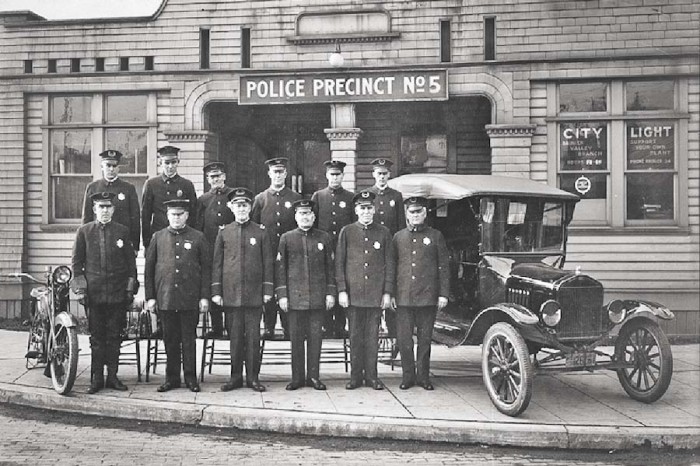
SPD’s disclosure of the items obtained through the 1033 program doesn’t tell the whole story though. The department is well-funded and can afford to purchase a sophisticated array of military style weapons without waiting for handouts from the Department of Defense.
“Some of the tools used by the military and the police are very similar,” Seattle Police Department Detective Drew Fowler said. “Some are even the same. The difference is, we are defensive in nature and they are offensive, but we do use some of the same tools.”
So what have they actually got? The Seattle Globalist is awaiting response to request a for a complete list of equipment the SPD obtained through the 1033 program prior to 2010, as well as a list of all the equipment used by the SPD SWAT team.
An SPD spokesperson told the L.A. Times earlier the week that the SWAT team has an armored truck called a BearCat, but went on to say, “we don’t have any military weaponry. The weapons we do own are specific to our profession. … No rockets, no predator drones, no cannons, no tanks.”
What about just outside Seattle? Crosscut released this list of 17 small town police and sheriff’s departments in places like Lynnwood, Aberdeen and Snoqualmie, that obtained MRAP’s through the 1033 program.
Our region also has more than a few active SWAT (Special Weapons and Tactics) teams. In addition Seattle Police Department SWAT, there’s the Valley SWAT (42 officers from the Auburn, Federal Way, Kent, Renton, Tukwila and the Port of Seattle police departments), Washington State Patrol SWAT and the King County Sheriff’s TAC 30 Unit. Immigration and Customs Enforcement has their own local SWAT team as well.
The disturbing trend of gun violence can certainly justify the need for SWAT teams: any town could, theoretically, be the next Columbine and in the event of a hostage situation or a school shooting, a SWAT team can absolutely come in a save the day.
In reality, though, those situations are excruciatingly rare. And once a SWAT team exists in any given locale, there is a drive to use it. So most nights, most places in America, SWAT officers can be found kicking in the doors of people suspected of drug crimes.
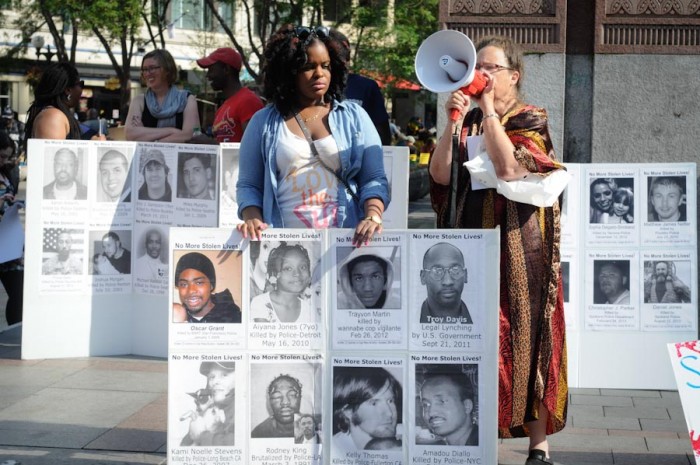
“SWAT teams used to only be deployed in the most extreme, dire circumstances: hostage and barricade situations,” said Goldstein. “These days, SWAT teams are primarily used to serve narcotics search warrants. It’s a total subversion of search and seizure and an expansion of government overreach into people’s lives.”
In March of last year the Bellevue SWAT team was attempting to serve a warrant in Columbia City and ended up shooting 51-year-old Russell Smith eight times and killing him as he attempted to flee the scene in his car.
“The issue with declaring wars in our cities is it changes how law enforcement view themselves and the missions they are on,” said Goldstein.
Police officers who see themselves as soldiers fighting wars against drugs and terror are more likely to shoot to kill and less likely to employ community policing tactics like negotiating. Give them military-grade weapons and that misperception only gets worse.
That self-image of the officers, and the image society has of them plays out in every interaction, reinforcing the dichotomy between the well paid, suburb-dwelling urban police officer and the citizens who live in the cities those officers police.
At some point society will have to confront this changing role of the police. And the more militarized the police are when that confrontation occurs — as it is in Ferguson this week and may again someday in Seattle — the more difficult it will be to get them to drop those semi-automatic rifles and flash grenades and return to protecting and serving the community from within.


I agree that the home land security justification is overused and overblown, but I also believe there are real threats that we need to prepare for. King County hosts some pretty important infrastructure targets, and its spread out. Seattle’s water supply spans the length of the Cedar River, and it also supplies many more communities a long the way. Two major airports. Major and critical industries span the county from Snoho to Pierce county lines. Several undersea communication cable landings and infrastructure. All on top of the requirements we have for high risk/active shooter response. The MRAPs have incredible capabilities that you would have to pay many tens of thousands of dollars for to get in ‘un-armored civilian versions’. Instead we got them for the cost of shipping, yes they came with armor but armor alone doesn’t equate to militarized. If we used that logic everyone that has canned food in their home would be in possession of ‘military grade equipment’. These vehicles have incredible natural disaster response capability, and once we reign in the corrupt assholes masquerading as public servants and change the fundamental problems with our policing organizations..Well, I hope that everyone want’s the good guys as well protected when it comes time to respond to an active school shooting, or hostage situation.
This site is pure comedy gold! Perez Giron tried killed two law enforcement officers over sounder fare. The idea that the police were out of line for shooting him is pure mental rubbish. Militarization of the police is a problem but pick better examples of abuses of power next time.
All valid points, thanks, Jason!
My god this story is embarrassing…for you. An illegal alien pulls a gun on cops and you think they should wait to be shot before they can shoot him? You complain that the cops are here to protect us then cite examples of them doing just that as them not protectig us. They ARE here to protect US not the criminals which is something you don’t seem to comprehend. Shooting a criminal attacking them or others IS protecting citizens. Your agenda is blatantly obvious and you obviously know little to nothing about law enforcement. Do some research before you embarrass yourself again.
Implying Whites/Blacks are not illegal immigrants. Lol. You posses citizenship that is created artificially out of thin air by a government who carried out mass murder/genocide of natives to 2% of the population. If anyone is a illegal immigrant, it is 98% of the 300+ million in the USA.
well, heres what i think: lael, keep up the good work. now, NO ONE should lose thier life over not paying transit fare. though its a bad example. i think that the enforcement officers should have let him go as he ran off, not tackle him and threaten his freedom. as if it wasnt embarassing enough to get forced off the transit.
as for the “use it or lose it” program. why is all of the stuff being given to our police for free???? first of all wasnt all that stuff paid for by tax payers? and how far into debt is the US? and if the police didnt need it they wouldnt buy it!
The only thing missing in these photos are the arm bands; symbolically the signs are the same thing.
You do realize the picture of your MRAP above is not a military MRAP. So I doubt it came from Iraq or Afghan as almost all of those vehicles were left there and sold as scrap metal because it would cost too much to ship back to the states especially the ones in Afghan.